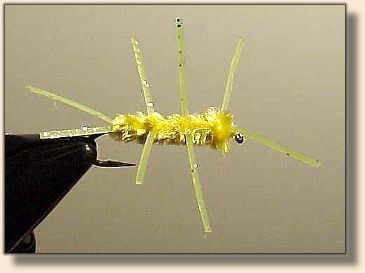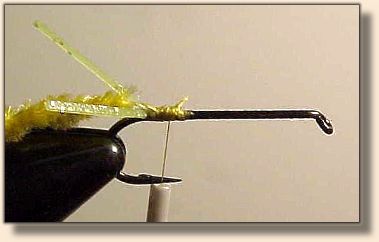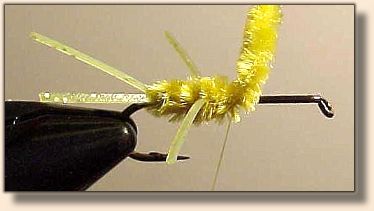|
Girdle Bug
The Girdle Bug is widely known and used in the big waters of the Western United States where
it was developed. The fly has for many years saved the day for many anglers on some of the
toughest waters of that region. Trout are the primary quarry, but we are not concerned with
them here.
As I have said on many previous occasions, I am an unabashed card carrying member of the
Tom Sawyer Division of Fly-Fishing.
Summer, and especially the dog days, raises water temperatures on many streams across this
great land far above the temperature where one can responsibly fish for trout. Tailwaters, and
Spring Creeks aside.
We often credit trout with superior intelligence, and if you want to buy into that theory have at it.
We all, I suppose, would like to feel we are fishing for a superior species as doing so must be
done by a being of equally superior intelligence, or so we delude ourselves.
Now, matching the hatch has its place and I have a great deal of respect for wary wild trout. A
more finicky creature one would be hard pressed to find. But, I will put a smallmouth bass right
up there with that wild trout! The smallmouth also fights much harder than does the trout.
Before you all go turning me into the fish police for writing blasphemy and heresy, I do
fish for trout also. I like trout. I like to eat a trout on occasion.
It is just that trout are not the only fish that can be a blast on a fly.
Would you like to be smallmouth fishing today on a creek which
was last week 15 feet or better above its' still swollen banks, stained
in color, much cooler than it had been, and immediately after a cold
front with heavy overcast? Ideal conditions? You'd like to stay in
bed I'll bet. No decent fish is going to be in a feeding frenzy with
these conditions, are they?
You are right, the deck is stacked against you from the first cast, but,
you can catch fish, and you can catch good numbers, if you know what to do.
Typically this creek will provide you with large numbers of panfish with surface bugs. Lefty's
Bugs, Chernobyl Ants, Sneaky Petes' all work great under normal circumstances on top.
Sub-surface a Woolly Bugger, a Partridge and Orange, a Sparkle Grub, or other such sub-surface
fare will get you into fish. And in my experience, all with about equal results.
But under the terrible conditions outlined above, the Girdle Bug, tied as shown is a true panacea.
When nothing else will work, this thing will perform. It is a "go to" fly and a confidence pattern
you can count on to catch lots of fish.
Let's tie it up and then we'll get into how to fish it for great results.
Materials
- Hooks: 9672 size 6 to 10 (larger for bass, smaller for blue gills).
- Thread: Yellow 3/0.
- Tails: Yellow metal flake rubber.
- Body: Medium yellow chenille.
- Legs: Yellow metal flake rubber.
|




